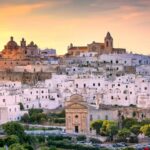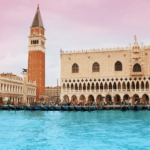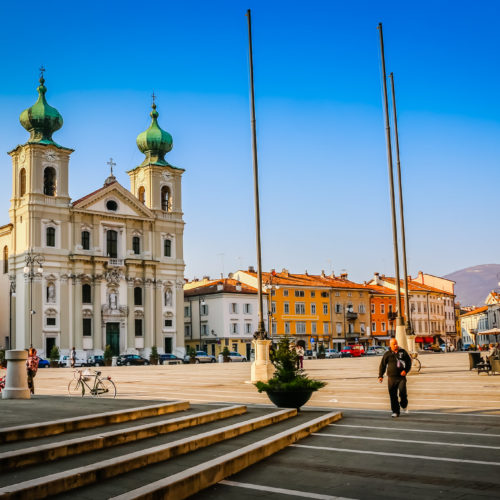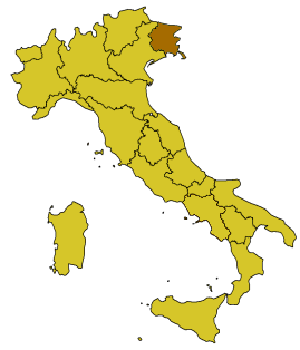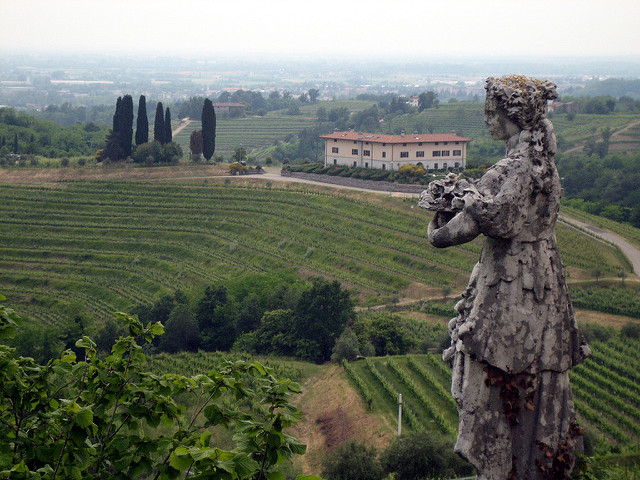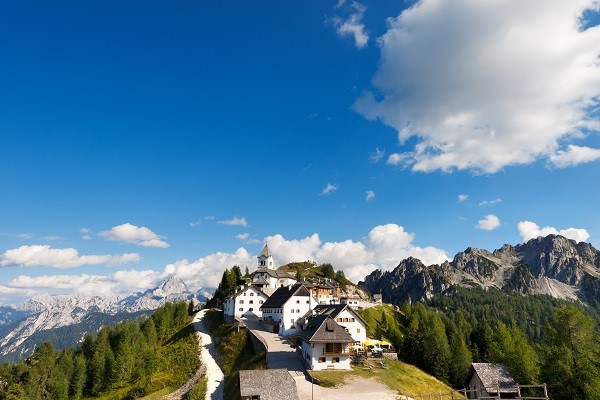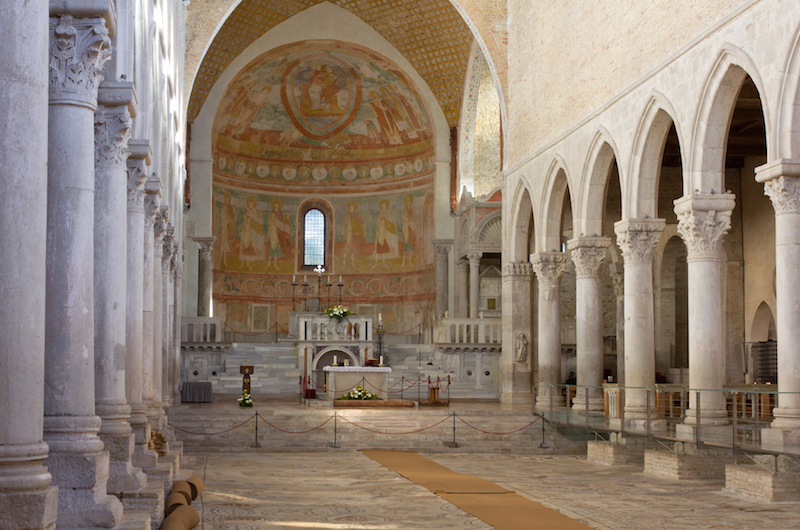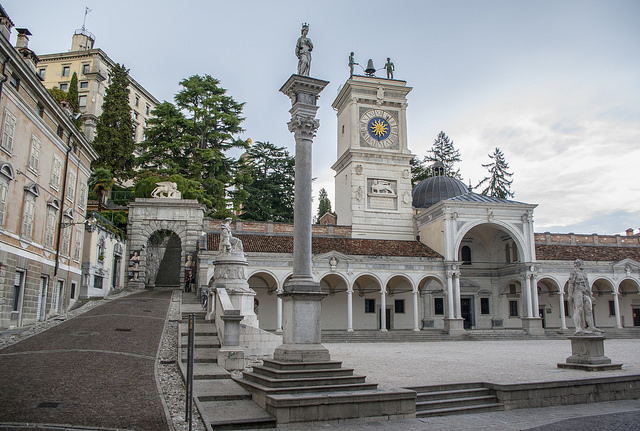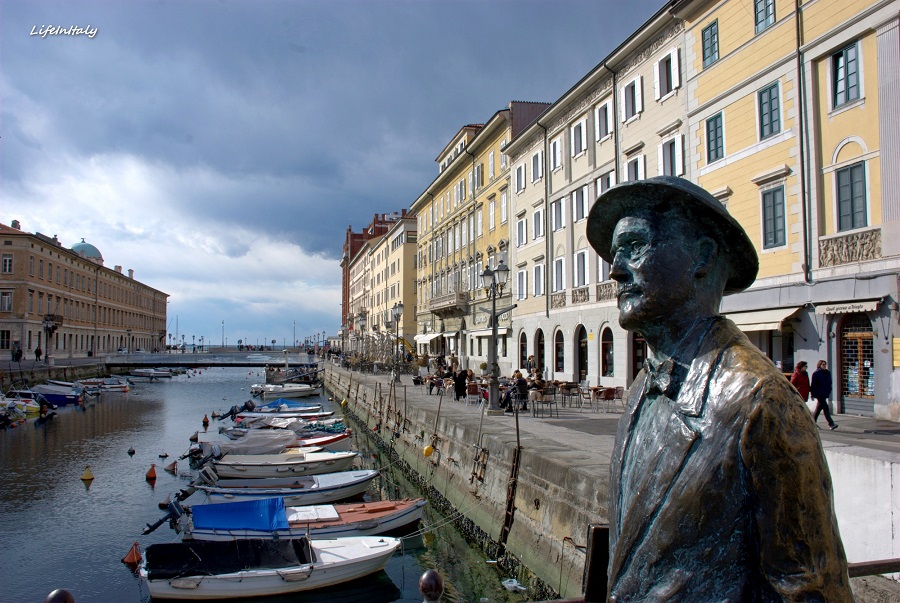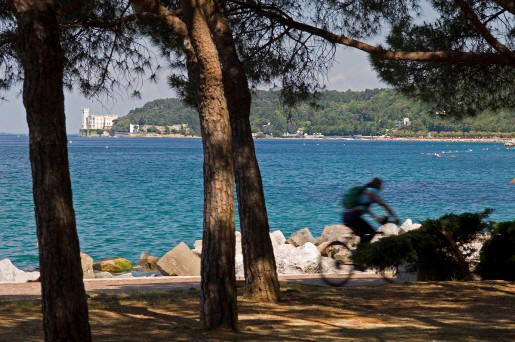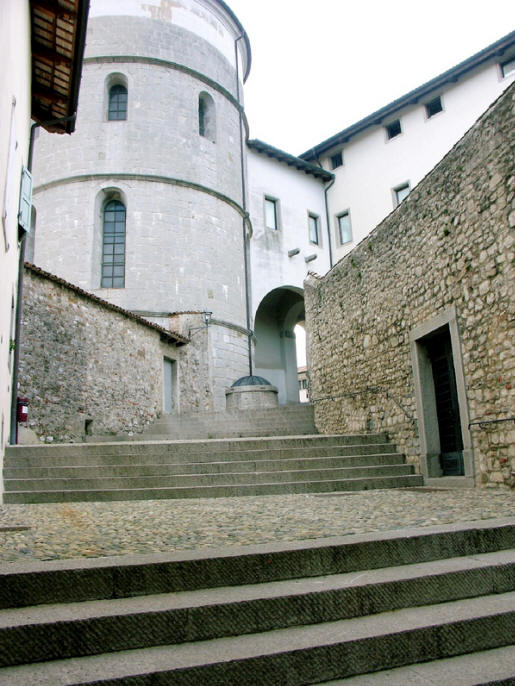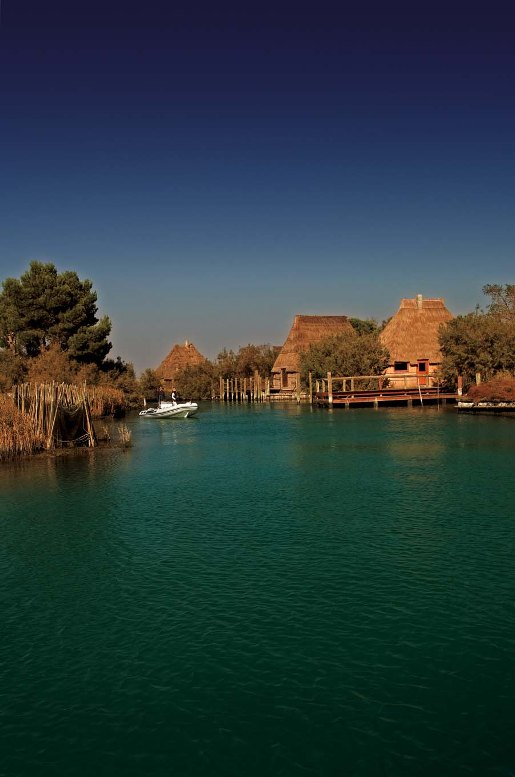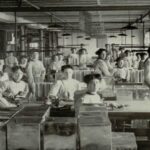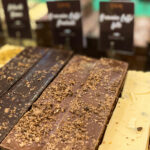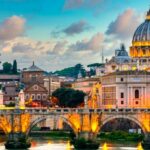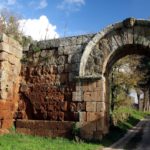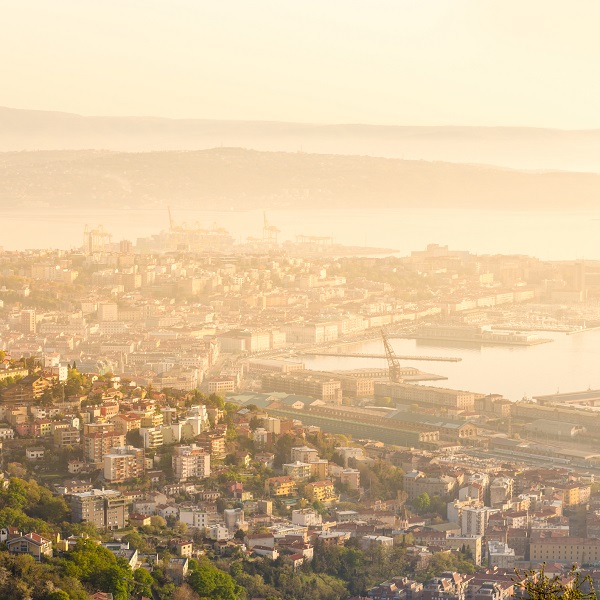
Ph. depositphoto.com/kasto
Trieste is the capital of the Friuli-Venezia Giulia region and has a population close to 260,000.
This beautiful, north eastern Italian city is one of the most important gateways that, over the centuries, helped trade and movement of people from the western countries to those located in Central and Eastern Europe. Trieste, Italy is known for many reasons, but there is one particular thing that came to represent the city more than anything else: the Bora, an extremely strong wind that became a sort of landmark of the city. This wind can, in fact, get so strong to create issues when walking around, so much so that chains are placed throughout the streets to offer support when needed.

Ph. wikicommons/Twice24 & Rinina25 & Marku1988
Brief history of Trieste, Italy
Previously an important Roman settlement and a city of the Byzantine empire, Trieste developed a truly international character that continued later, with the establishment of the Austro-Hungarian Empire and the subsequent bouncing back and forth of the town between Austria and Italy.
That sentiment changed during World War I when Trieste was subject to the final change that delivered the city to Italy for good, and the rise of Fascism eliminated any non-Italian element.
Things got worse during World War II when Trieste suffered greatly from the horrors of the conflict. The invasion of the Germans first, followed by that of Yugoslavian Communists truly put the city down in what seemed to be a never-ending center of war, with endless death and sorrow.
In more recent years, the close borders with Yugoslavia and the republics created after its break down have resulted in an interesting exchange of people and cultures.
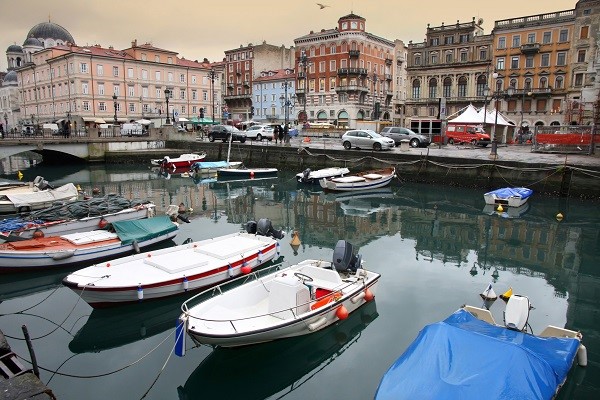
Ph. depositphoto.com/vladacanon
Today, Trieste is a very wealthy city: it is the home of the largest European manufacturing plant of boat engines, and it is also the hometown of Illy Caffe’, one of the most recognized brands of coffee in the world. One of the most prestigious Italian insurance and financial companies, Le Generali, was also founded here.
Trieste is ranked as one of the top Italian cities for its quality of life, which is surely a well-deserved recognition. Visiting Trieste is a joy, for its wonderful port and the Canal Grande, and of course the wonderful and breathtaking Piazza Unità d’Italia (Unity of Italy Square). Trieste’s Roman heritage is also still very much visible, making it a very diversified city from an architectural point of view. There are several good examples of various architectural styles, ranging from a Roman arch and theater, to Austrian architecture, passing through a confluence of various Mediterranean styles.
The city was a very important port in Italy in the 18th century, which has left the city in a beautiful state. Trieste is considered to be one of the most important tourist destinations in the region because of its many important sightseeing attractions. So, include this city on your itinerary and you will not be disappointed.
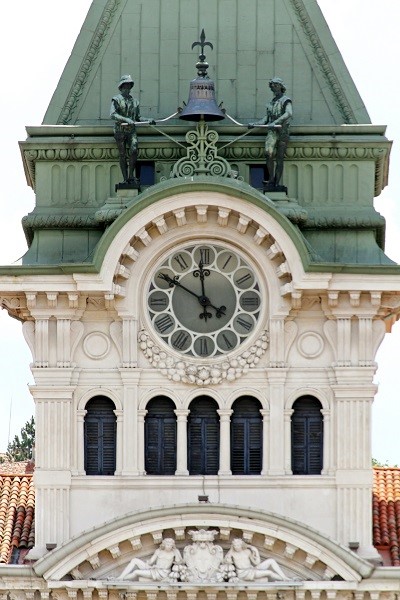
Ph. depositphoto.com/Baloncici
Attractions in Trieste
Miramare Castle
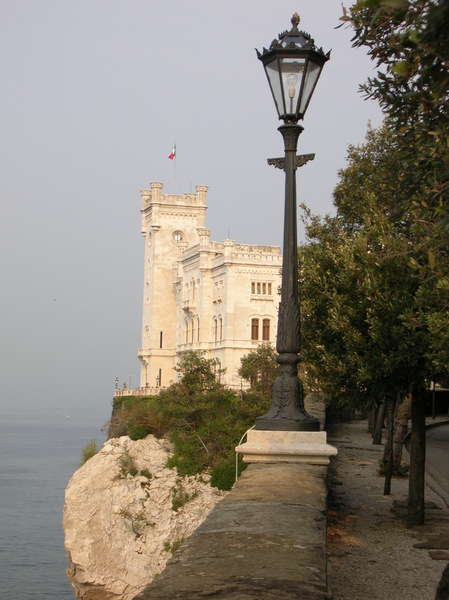
The Miramare Castle was built in 1856 according to the designs of Carl Junker, who worked for the Archduke Maximilian of Augsburg. The gardens of the castle are very beautiful, with a variety of trees. There are two ponds with swans and lotus flowers, an annex, a large statue of Maximilian in bronze, and a tiny chapel.
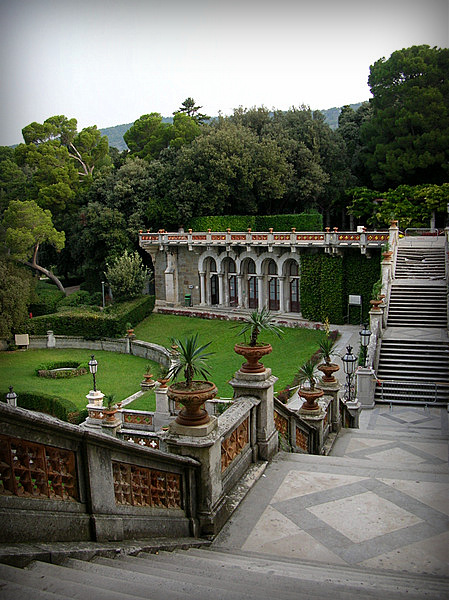
San Giusto Castle
The San Giusto castle was built on the remains of various castles which had existed in that particular location. The construction of the castle took around 200 years to finish. Its central part was built at the time of Frederick II, in the 15th century, the round, Venetian bastion in the 16th century, and the Pomis in the 17th.

Ph. wikicommons/MatthiasKabel
Piazza Unità d’Italia
The main square in Trieste is one of the most beautiful in Italy and the biggest square facing the sea in Europe. The beautiful Town Hall overlooks the square.
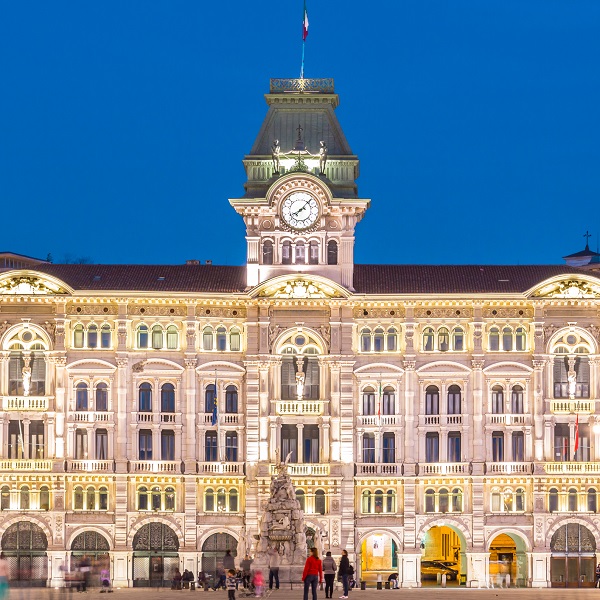
Ph. depositphoto.com/kasto
The Cathedral
The cathedral of Trieste is the main religious monument in the city. The first building originated in the 6th century, over the remains of a Roman edifice, the structure of which was used as a foundation for the church. Inside, the symbols of Minerva, Juno, and Jupiter were found. The Late Antique, mosaic floor of this early building is still extant and has been integrated into the flooring of the present-day cathedral.
Saint Spyridon Church
The Chiesa di San Spiridone is a Serbian Orthodox Church. In 1751 Empress Maria Teresa allowed free practice of religion to Orthodox Christians. It’s a symbol of the cultural mix of Trieste.
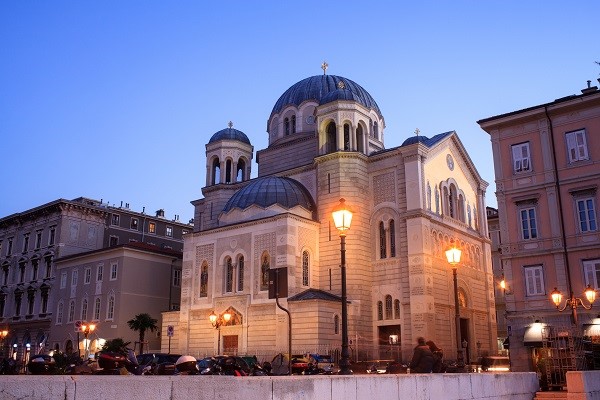
Ph. depositphoto.com/bepsimage
Arch of Riccardo
One of the oldest monuments of the city, the Roman arch of Riccardo dates back to 33 BC. It was originally a large gate built as a part of the ancient walls during Roman times. The gate is located in Piazzetta Barbacan, in the old town. It is believed that Richard of England crossed this gate and that it was from this event it took its name.
Caffè San Marco
Caffè San Marco is an historic cafè. Many famous writers like James Joyce (who lived in Trieste for several years), Italo Svevo and Umberto Saba used it as a favorite spot to write and relax.
Roman Theater

Ph. wikicommons/triestino
Another ancient Roman monument in the city is the theater. The building is located at the base of the hill of San Giusto and it faces the sea. The theater makes use of the slope of the hill, on which it is located. The theater was mostly built in stone, with the top parts of the steps and of the stage built in wood. During an excavation and restoration project conducted in the 1930s, various ancient statues, once used to decorate the theatre, were found. These are now kept at the Town Museum. Three inscriptions have also been discovered, on which Q. Petronius Modestus was mentioned. It is believed that the theater had been built in the 1st century BC.
Getting to Trieste
Trieste is a large city and an important tourist center, so it is quite easy to reach. Trieste Airport has many domestic flights coming in from Genoa, Rome, and Milan. Many international flights also reach the city from locations like Copenhagen, Munich, London, Prague, Belgrade, and Bristol. There is a train station in the city which has plenty of trains coming in regularly from Udine, Venice, Rome, and Milan. There are also some trains that reach the city from locations like Zagreb, Budapest, Maribor, and Ljubljana. Plenty of buses also operate in the region. Those who are traveling by car can take the A4 highway from Venice.
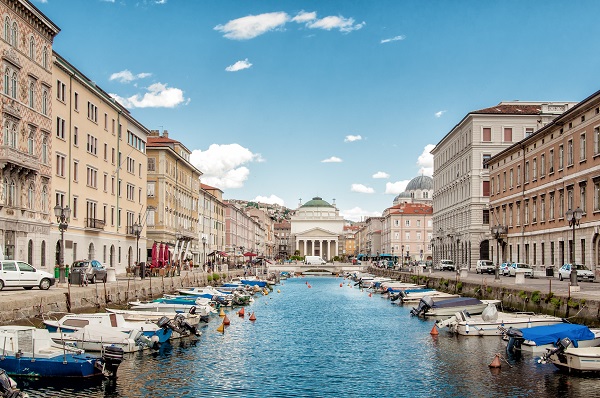
Ph. depositphoto.com/tepic
Moving Around the City
Like most places in Italy, Trieste is a fun place for walking around admiring its old architecture and its many narrow lanes dotted with cafés. There is also a public bus system in the area which is very punctual. The information is available on their website. The tickets are easily available from most tobacconists and from vending machines at the bus stops. Since Trieste is not a very large city, most sightseeing attractions can be explored on foot.
Stay and Accommodation
As mentioned, Trieste is a very important tourist destination in the region, and it attracts thousands of tourists each year. As a consequence, there are plenty of good accommodation options to choose from. There are many luxury and world-class hotels in the city, as well as many budget ones. There are also a few hostels and bed & breakfasts, which provide inexpensive rooms to travelers. Some of the best accommodation options in Trieste are the Tergeste Youth hostel, Hotel Porta Cavane, B&B Adria, Hotel Roma, NH Jolly Trieste, and the Greif Maria Theresia.
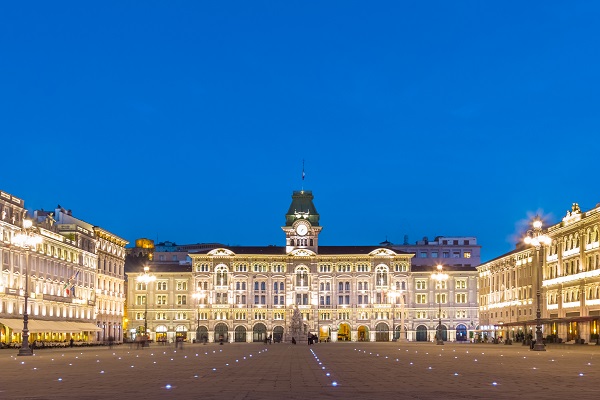
Ph. depositphotos/kasto
Eating in Trieste
Trieste is a perfect place for food lovers since the cuisine of the city reflects the many different cultures and people who lived there over the centuries. There are several restaurants where visitors can sample Slavic and Austrian dishes. Some traditional delicacies to look out for are the Caldaia, boiled pork, the Jota, a soup, gnocchi, brodetto, risotto, bruscandoli, sardoni, pinza and various delicious Austrian cakes like Sacher torte, sturcolo cotto and krapfen.
Shopping in Trieste
In Trieste, visitors can purchase beautiful paintings and glasswork from Venice and France. In Piazza Unità d’Italia and the Jewish Ghetto, one can find Austrian silverware, antiques, glassware, and furniture. There are several good shops in the city selling historic photographs, beautiful postcards, ancient books, antique engravings, and prints, which have been locally made by the artisans of the city.

